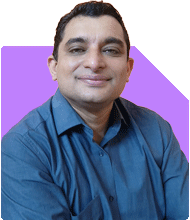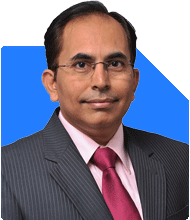Sanjeev Govila | Answer |Ask -Follow
Financial Planner - Answered on May 19, 2023
He has over 12 years of experience in financial planning and is a SEBI certified registered investment advisor; he is also accredited with AMFI and IRDA.... more

sir I am 65 years old govt.pensioners..please advise better saving port folio to help me in old age as well as my grand daughter future ...education expenses...sir post office scheme is longterm investment which i could not use earlier....
1. Taking life-time to be minimum 90 years, we’re talking about at least 25 more years of living and investing. Hence, it is a myth that investing in older age should be in absolutely safe instruments since inflation doesn’t care for one’s age.
2. While bank FDs and post office instruments might give you steady returns, please remember that they will always give you returns which will be negative after catering for taxes and inflation. This means that the value of your portfolio will always keep decreasing if you fully invest in such instruments only.
Regarding a good investment portfolio for you, please invest as per your risk profile – meaning how much safety and volatility are you comfortable with – and your future requirements. You have mentioned that you are a govt pensioner, implying that you may be getting enough pension for your day-to-day living. So, make out a list of your future requirements (called financial goals). Then apply the formula that long term requirements go into volatile investments like stocks for better returns and short term into safer ones. On top of this, your risk-taking ability is imposed to give you percentage of safe and volatile investments that you should have.
Amongst the instruments to invest, bank FDs or debt mutual fund for safer investments and equity / hybrid mutual funds for longer term would be good for you. In FDs and debt MFs, try to take longer term investments since interest rates are quite high now. Avoid post office instruments like Senior Citizen Savings Scheme and PO MIS since they compulsorily give you an income which you probably do not need, and hence miss out on the compounding advantages.
For you grand daughter, only good equity funds should do, assuming that she’s very young.
You may like to see similar questions and answers below
Sanjeev Govila | Answer |Ask -Follow
Financial Planner - Answered on Jan 26, 2023
Ramalingam Kalirajan |10902 Answers |Ask -Follow
Mutual Funds, Financial Planning Expert - Answered on Jul 09, 2024
Ramalingam Kalirajan |10902 Answers |Ask -Follow
Mutual Funds, Financial Planning Expert - Answered on Jun 20, 2025
Ramalingam Kalirajan |10902 Answers |Ask -Follow
Mutual Funds, Financial Planning Expert - Answered on Jul 10, 2025
Anu Krishna |1749 Answers |Ask -Follow
Relationships Expert, Mind Coach - Answered on Dec 17, 2025
Anu Krishna |1749 Answers |Ask -Follow
Relationships Expert, Mind Coach - Answered on Dec 17, 2025
Radheshyam Zanwar |6748 Answers |Ask -Follow
MHT-CET, IIT-JEE, NEET-UG Expert - Answered on Dec 17, 2025
Anu Krishna |1749 Answers |Ask -Follow
Relationships Expert, Mind Coach - Answered on Dec 17, 2025
Dr Shakeeb Ahmed Khan |184 Answers |Ask -Follow
Physiotherapist - Answered on Dec 17, 2025
T S Khurana |538 Answers |Ask -Follow
Tax Expert - Answered on Dec 17, 2025
T S Khurana |538 Answers |Ask -Follow
Tax Expert - Answered on Dec 17, 2025
Janak Patel |72 Answers |Ask -Follow
MF, PF Expert - Answered on Dec 17, 2025
Ramalingam Kalirajan |10902 Answers |Ask -Follow
Mutual Funds, Financial Planning Expert - Answered on Dec 17, 2025
Samraat Jadhav |2511 Answers |Ask -Follow
Stock Market Expert - Answered on Dec 17, 2025




























